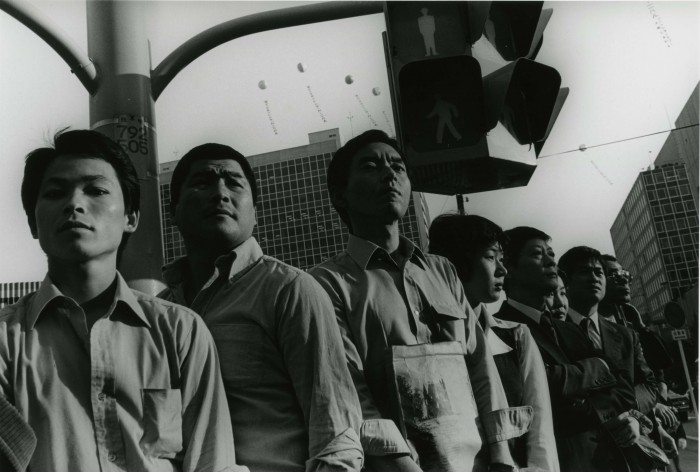Here some translations of reactions on Twitter to the sad news regarding Shomei Tomatsu. (The original Japanese is linked after.) Just one personal note: Tomatsu was given an incredible name for a photographer, as Shomei (照明) literally means “light,” as in “illumination.” His real name was actually Teruaki, but that’s just a different reading the same characters.
Kenji Takazawa, critic
Shomei Tomatsu. Definitely a great figure of post-war Japanese photography. I wish him happiness in the next world. [J 1] I have the still-fresh memory of reading an article in the September 2012 issue of Nihon Camera about a workshop in Okinawa that Tomatsu gave to young photographers on digital photography. The reporter was Keizo Kitajima. “He’s still got energy,” I even thought to myself. [J 2] Yasuhiro Ishimoto, Masahisa Fukase and Tomatsu all passed away last year. It’s a little trite to say, but it feels like the turning point of an age… [J 3]
Yuhki Touyama, photographer
I’m thinking about the seminar I went to 10 years ago in Okinawa. Glad I was able to go. [J 4]
Kiyoshi Inoue, photographer
Shomei Tomatsu has passed away. He was a photographer I greatly respected. He pursued the clear perception of the times and photographic expression. I only met him once, but I won’t forget his magnetism as a photographer. [J 5]
Kyohei Sakaguchi, architect/writer
Shomei Tomatsu passed away… When I was in high school I wanted to be a photographer, so I was excited whenever I could see a photobook. After I came to Tokyo I saw “Oh! Shinjuku” in a library and was immediately even more excited. Yep, I originally wanted to be a photographer. I still have a photobook I made in high school, lol. But really, lol. [J 6]
Tomatsu’s passing has elicited a significant response, both here and abroad. Among other things this gives me pause to wonder: Takuma Nakahira is also not well, but will he be lionized in the same way?
Jun Abe’s “Citizens” is on display in Osaka, at The Third Gallery Aya 1, through February 2.
There are two must-see shows up: Kitai Kazuo at Syabi (Tokyo) and Lieko Shiga at the Sendai Mediatheque. That needs to be made clear!
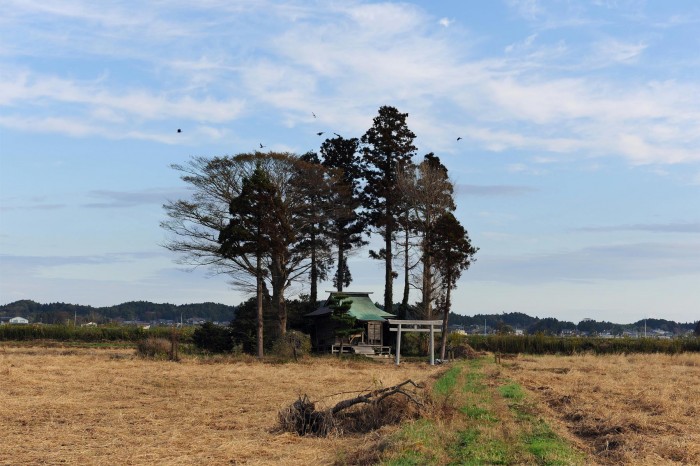
© Chu-Ha Chung
I have neglected to post links to some of the things that I’ve written for American Photo over the past couple of months, and while I’m planning to do a larger link dump, I want to highlight one post in particular since it relates directly to Japan. It’s a long piece on the work of a Korean photographer, Chu-Ha Chung 1, who traveled to Fukushima in the wake of the 3/11 nuclear accident to take photos there. If you keep an eye on Asian news you’ll be aware that tensions between Japan and Korea are running extremely high, and the name of Chung’s project, “Does Spring Come To Stolen Fields?”, references the title of a famous Korean poem written under Japanese occupation. However, Chung is very sincere about creating understanding through his work, and I think his project deserves a careful look.
Photography came to the fore of the coverage of the NYC subway pushing incident, after the New York Post ran a controversial front page image showing the victim’s last moments. The photograph has incurred the wrath of outraged internet commenters, who interpret its capture as a cynical act. This comment sums up the mood: “Heroes help, chumps take pictures.” 1 The photographer, freelancer R. Umar Abbasi, has claimed that he was using his flash to warn the train conductor that a person had fallen onto the tracks.
While this is clearly not the place to judge the practical value of Abbasi’s actions, I’m interested in this event as it relates to photography. In an interview with Anderson Cooper 2, Abbasi says that he was not looking at the viewfinder at all; the camera was extended from his body, so he was (in his own words) “shooting from the hip.” If we take this explanation at face value, he was operating the camera in the crudest manner possible, not even as a “dumb” button pusher but without any intent at all to produce images—these were just side effects of the flash. As he explains in the video, his camera was still on a daylight setting, from a previous shoot before he went underground.
The fact does remain that one of these underexposed, apparently unintended images still made the cover of a major metropolitan newspaper (I’m not sure how else to describe the Post in a way that makes it seem respectable). However, taken by itself, the quality of this image cannot cast any doubt upon the photographer’s claim. The reason for this should be obvious: it’s possible to produce a technically crisp image with literally no effort at all. Reading the coverage of this incident has reminded me of something Thomas Demand said when I interviewed him earlier this year: “Technically, photography is actually not that difficult. Now, it becomes clearer and clearer as everybody has a camera that it is pretty simple. A digital camera makes amazing photographs without you doing anything. The standard setting of a Canon Mark 3 just blows your mind, it’s fantastic.”
Whether you want to call it “technically crisp,” “amazing” or “beautiful,” it’s all the same thing: the aesthetic quality of images. We’re only a short jump away here from the old discussion (everyone’s favorite, I know!) of the “sea of images” 3 and why beauty is useless as a goal 4, and we can leave it aside for now. What jumps out from Demand’s quote is the idea that the relative technical ease of photography is not directly tied to the “rise” of digital photography. Digital, instead, is making it easier to perceive this state of affairs, though perhaps it’s taking longer to sink in than Abbasi might have liked.
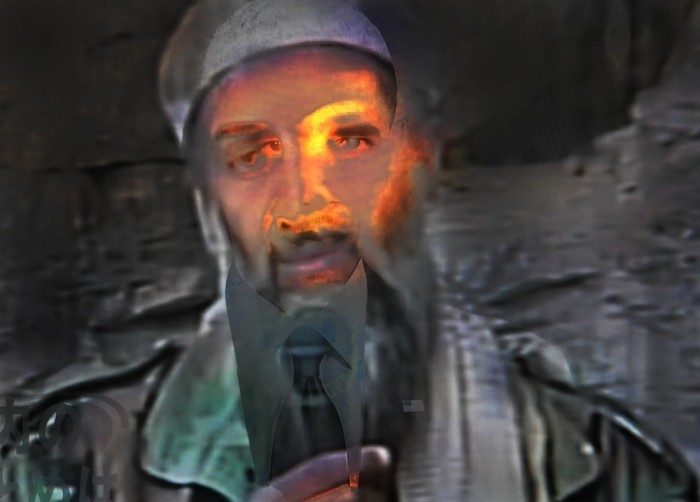
"2011, Osama bin Laden, Barack Obama, Qatar Al Jazeera-NHKbs TV" ©Kikuji Kawada Courtesy of Photo Gallery International
Kikuchi Kawada, “phenomena – 2011” at PGI
Kawada is known in the West for his classic book Map, but his new work deserves to be equally celebrated. As you can tell from the image above, he’s embraced digital technology in a very radical way. I was lucky enough to stumble into Kawada’s gallery talk, where he spoke eloquently about his current ways of working (including his great love of iPhoto slideshows) and the challenges of photographing today. At a glance, this series looks terrible, as if Kawada had just applied some bizarre Photoshop filters to his images at random, but he does know what he’s doing, claiming that he likes printing out his photos on inkjet printers because it adds to the digital effect of his work. I left thinking that this work could be easy to write off it was made by a 23-year-old photo student, but credit to Kawada for taking a risk. It’s encouraging to see an old master leading the way.
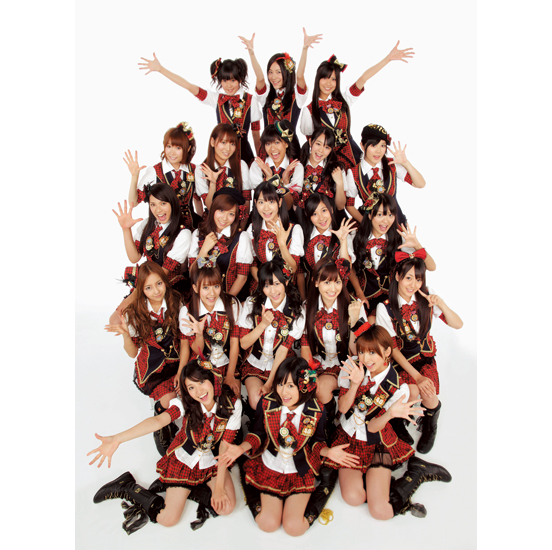
"AKB48, 2010"
Kishin Shinoyama, “The People” at Tokyo Opera City
This exhibit was not quite a retrospective of Shinoyama’s photographs—more like a jumble of his portrait work. Shinoyama is a skilled photographer, and I was hoping to learn more about the development of his work, but the selection was poor: the show consisted mostly of celebrity portraits, and it is ironic that, in the same room where Takashi Homma showed his photographs of McDonald’s around the world, Shinoyama put up monumental prints of Tokyo’s Disneyland. Apparently, it was the first time that a photographer had been allowed to take such images, and perhaps it was a thrill for some of the (numerous!) audience, but after paying 1000 yen I felt cheated to look at photographs shilling for Disney. In talking with others later, I came to understand better the value of Shinoyama’s portraits as a kind of nostalgia trip. Still, his post-3/11 portraits are unconscionable, as if he’d hopped out of a van and plunked his tripod down in front of the first few people he came across.
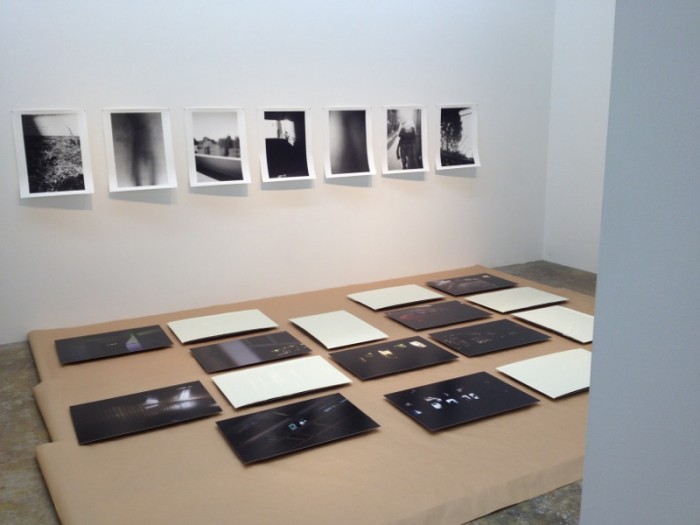
Installation view courtesy of Emmanuel Guillaud
Emmanuel Guillaud & Takano Ryudai, “Black Closer to White” at Yumiko Chiba Associates
An exhibition that derived its power from an experimental installation: Takano’s black and white photos were hung on a wall, while Guillaud’s almost colorless color photos were laid out underneath, some covered with white paper. Guillaud’s extremely dark images showed people on trains or otherwise glimpsed through Tokyo’s urban barriers, while Takano showed brighter photographs. Each body of work was quite subtle, requiring time to digest, and the unusual way of displaying these two series was successful in holding the gaze.
Daido Moriyama, “Labyrinth” at BLD
This exhibit was a pleasant exception to the idea that looking at a contact sheet will help you discover, in a romantic way, the “special” (OK, decisive) moment when the photographer’s vision perfectly met his or her subject. This is probably why someone thought it would be worth publishing the contact sheets of the Magnum photographers, the most romantic photographers of all. With Moriyama, though, there’s no romance: he shoots with a compact camera, but he is not trying to pick out “moments” in the Winogrand or Gilden sense. This exhibit shows only where he looked, and it’s enlightening to see Moriyama spend an entire roll of film on a theater sign, his famous tights, or the play of light on a tree. He really is the photographer of Light and Shadow.
Daido Moriyama, “Mesh” at Gucci Shinjuku
I might have been more upset about this show (installed in the event space of Gucci’s Shinjuku store) if I’d seen it a couple of years ago, but post-Color I can’t begrudge Moriyama for coasting. The exhibit itself was an unremarkable, screenprinted career retrospective featuring many of the hits which I’d already seen presented at BLD in a much more challenging way. The fishnet stockings, from which this show took its name, covered every available surface, but the effect was cheesy. At least a new audience will have discovered his work.
“On Photography” at Misa Shin Gallery
This was a three person show, featuring Seung Woo Back, Jio Shimizu and Tsuyoshi Ozawa. I’m not totally convinced by the title, but the photographs were excellent. Back was showing new work that will remind anyone of Sohei Nishino’s composite city photographs. It’s a kind of photographic collage, in which views of a city taken from a number of different perspectives are placed together to make a kind of “map.” Nishino actually puts his photographs together to mimic the form of a real city, creating the simplistic illusion of being able to “take in” the city as a complete unit. This makes it easy enough to look at the work from 20 feet away and move on. Back’s work, though, draws the viewer closer: he’s created new, fictional places, out of photos he shot in five cities across Japan and Korea, and I found myself looking carefully to try to figure out where exactly they were. Shimizu is producing images through intriguing experiments with physics, while Ozawa showed a series called “Vegetable Weapon,” in which he asks people to construct guns out of supermarket vegetables.

© Ryuichi Ishikawa
I first met Okinawan photographer Ryuichi Ishikawa at the 2011 Higashikawa Photo Festival 1. Many of the portfolio reviews in Higashikawa are done in a semi-public fashion, so I could watch as he filled an entire table with prints of his color portraits—while still keeping an immense stack in reserve. At the time, Ishikawa’s photographs seemed competent, and certainly showed plenty of energy, as it seemed like he’d photographed every person he’d ever come across. That actually might have been the case, because he uses a Hasselblad with a digital back (an investment which caused his reviewer a small shock).
It’s generally not that fruitful to discuss cameras up front, but in Ishikawa’s case I think it’s worth mentioning, because his newer work shows a significant improvement. On the one hand, he’s gotten better technically, avoiding the 6×6 format trap of always having the subject in the middle of the frame. More importantly, though, it seems like he’s gone a bit deeper in finding his subjects. In each case, the ability to literally shoot for free can only have helped his development. Ishikawa was awarded Honorable Mention at the 2012 Canon New Cosmos of Photography.




